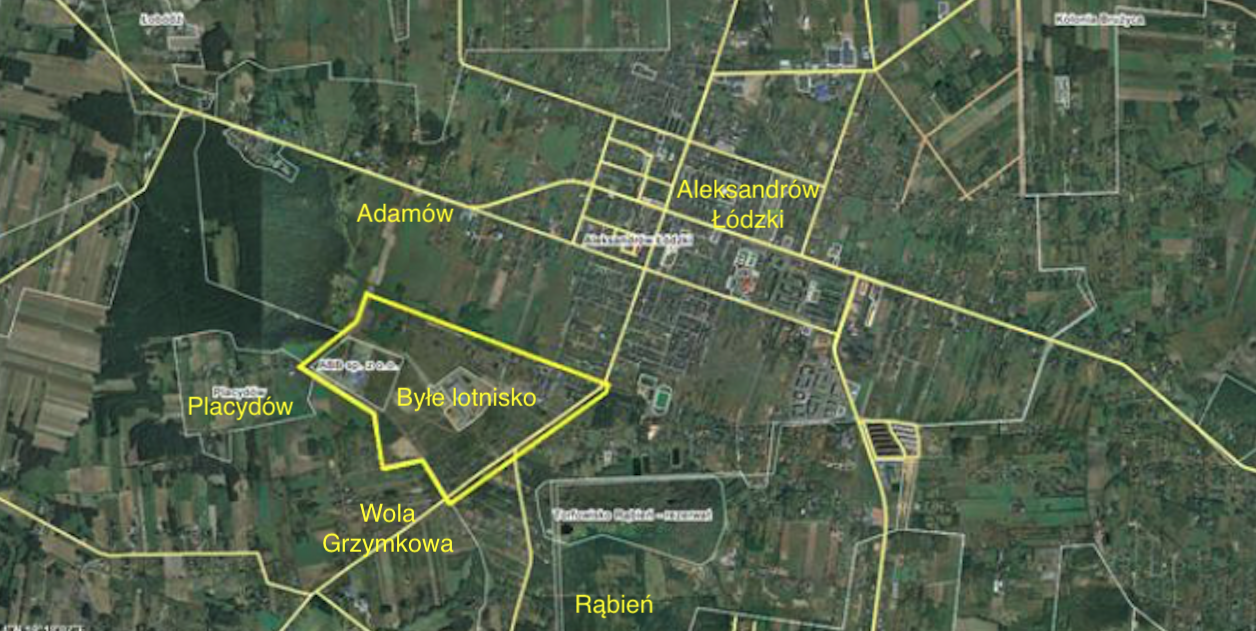Aleksandrów Łódzki 2013-10-12
Aleksandrów Łódzki airport
History – Aleksandrów Łódzki Airport.
Currently, it is difficult to give the date of the airport’s construction. No documents have survived. Probably in the second half of the 1930s, a military field airfield began to be organized. The soaring poplars that were planted around the airport’s backstage outside the landing area are a silent witness to these events. Planting poplars around military objects exposed to aerial reconnaissance was a common practice in the Second Polish Republic. In 1939, Aleksandrów Łódzki airport was included in the list of field airports in the Łódź region. There were 7 of them; Aleksandrów Łódzki, Bechcice, Ksawerów, Kuciny-Dalików, Lublinek, Skotniki, Sokolniki. The 63rd Observation Squadron (Accompanying) used the Aleksandrów Łódzki Airport, whose home airport during the defensive war was Lublinek. The 63rd Squadron had seven RWD-14 Czapla observation aircraft and two RWD-8 liaison aircraft. In the evening of September 4, 1939, II / 63 Platoon was transferred to the Aleksandrów Łódzki Airport. The platoon commander was Captain Observer George Wolf. On the night of September 5, 1939 on September 6, 1939, II / 63 Platoon was transferred to the Kamień Airport.
During the German occupation, the airport was expanded to meet the war needs. Most of the work was done by Polish forced laborers who had to report to work with their own tools, carts and oxen. Several new facilities were erected, including a large hangar that survived the fire in 1961. It was one of the largest hangars in Poland. There were also several smaller hangars-warehouses. The air traffic control tower was erected and the aircraft parking area was concrete. No German combat unit was stationed at the airport. Rather, the airport served as a staging airport and storage function, including an ammunition store.
In January 1945, the airport was occupied by the Russians. Importantly, the airport practically did not suffer. The Russians did not stay here long because the front was moving very fast. From May 1945 to September 1945, the airport became one of the airports of the so-called Łódź Junction, where the Polish air regiments participating in the war on the Russian side were gathered. The second such node was the Kutno node. It happened so because when the Russian army seized Berlin, all Polish units were ordered to transfer to Poland immediately. The Polish People’s Army did not occupy the airport for long. The building was devastated. Therefore, the Polish authorities relatively quickly agreed to transfer the airport to the reborn Łódź Aero Club. With great effort, the airport was expanded for aero club purposes. A runway with dimensions of 800 m x 100 m, in the direction of 10/28, was marked on the take-off area. On June 15, 1953, the airport was officially reopened. The aeroclub developed very dynamically. New gliders and planes were arriving. As long as the weather was good, gliders and planes took to the air. Professional soldiers serving at Lublinek Airport were almost the entire staff of the flying club.
Written by Karol Placha Hetman


